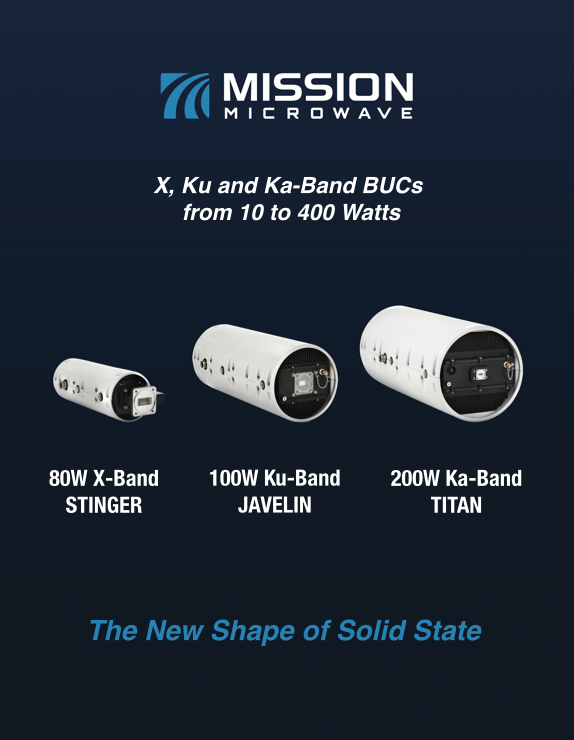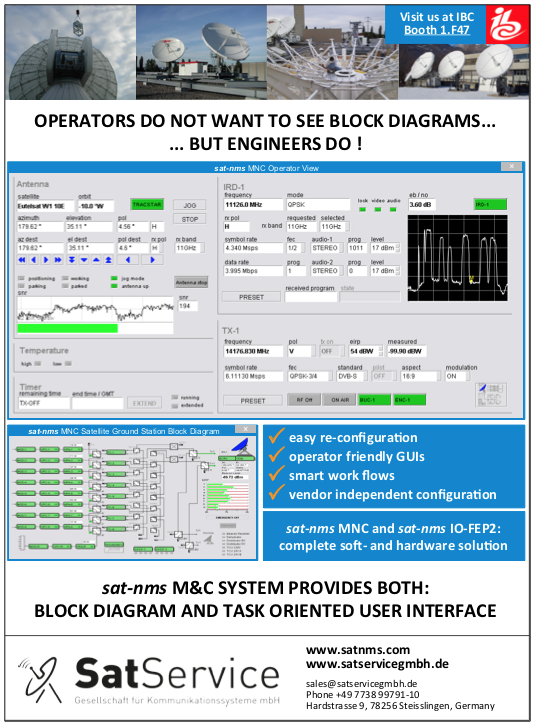The spaceflight industry is experiencing increased activity of late... there are missions to Mars, Jupiter, asteroids — mix in the new innovations in satellite and launch vehicle technology and space is front-page news once again.
Factor in the recently announced push by NASA to land humans on the moon by 2024 and it’s fair to say that this level of public excitement and industry enthusiasm has not been witnessed since the start of space exploration with the Sputnik launch in 1957 and the first manned spaceflight in 1961.

Fast-forward more than 50 years and smallsats are in Low Earth orbit (LEO) — these spacecraft are destined to bring WiFi and cellular coverage to every citizen on the planet, as well as enhance the imaging and Earth Observation (EO) capability of industry and government.
This flurry of activity has captured the attention and heightened interest from venture capital firms and commercial company investors that were never previously involved with the space industry. In 2019 alone, new barriers were overcome with the launch and successful deployment of new smallsats that will be the basis of large constellations over the next few years.
Now, major semiconductor suppliers are actively figuring out how to engage this new customer base with innovative approaches and an entirely new business model.
This article examines the emerging smallsat constellations market and explains why manufacturers are forgoing the traditional, radiation-hardened components that have been used in spaceflight during the last six decades.
Discussed will be how electronic component makers are addressing this potentially disruptive market and compare new radiation-tolerant plastic ICs with the commercial Off-The-Shelf (COTs) ICs widely available today.
GEO Satellites Versus LEO SmallSat Constellations
There is a growing divergence in the satellite industry. Traditional satellites typically have long mission lives (15 to 20 years) and span a wide range of orbits, including Geosynchronous Earth Orbit (GEO) as well as deep spaceflight.
These satellites also have high radiation level requirements and stringent reliability and quality requirements. On the other hand, smallsats in LEO — below the Van Allen radiation belt where most of the destructive particles are trapped — have low radiation level requirements and their reliability and quality requirements are less stringent.
Figure 1 on this article’s opening page shows hundreds of interlocked smallsats forming a LEO constellation network.
The wide chasm is fading between these two, general classes of satellites. The dawning of large constellations planned for higher LEO and greater satellite capability will drive down bandwidth costs.
This will require a larger number of satellites that will possess slightly longer mission lives (around five years), higher orbits (1,100 to 1,300 km.), higher radiation level requirements as well as more stringent reliability and quality requirements.
Over the past few years, the satellite market has undergone great change: companies that produce and integrate satellites have seen a slump in orders for large satellites operating in geostationary or geosynchronous orbit.
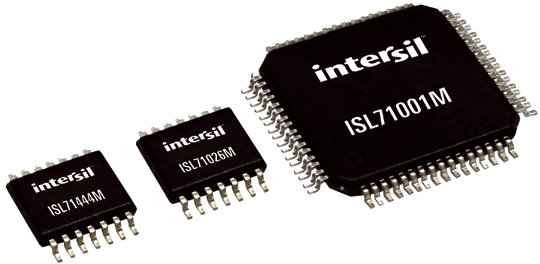
Figure 2. Surface mount plastic packages with Ni/Pd/Au-Ag lead finishes.
Contracts for geo-commercial satellites are shrinking from an annual average of approximately 20 to 25 down to 5 to 10 in number and certainly has the rapt attention of the industry. New proposals and constellations are being announced on an almost continuous basis. The U.S. government is getting in on the action, as well, by sending out Requests For Proposals (RFPs) for smallsat constellations.
The semiconductor market must change and adapt. These new constellations lack the budget of more traditional satellites. Where a satellite bound for geostationary orbit may have a budget of $100 million or more, smallsats are in the range of a $1 to 10 million per satellite.
Plus, the cost pressures continue to be applied, from the industry down to all IC suppliers. While this presents challenges to the existing business for space grade IC manufacturers, it also presents an opportunity to help solve bigger problems for customers.
Challenges of Using COTS Components
As these new large constellations have slightly more demanding technical requirements than the previous iteration of smallsats, they are expected to drive up IC volumes. In spite of having less electronic content per satellite versus larger traditional satellites, the sheer number of smallsats and ground support stations drives a much larger volume quantity potential on a per product basis.
These types of volume potentials are unprecedented and bring a natural expectation of lower component costs. While the technical or radiation requirements are not as rigorous as traditional satellites, the large constellation requirements can still bring considerable costs and risks.
To drive costs down, the out of the gate tendency could be to select commercial COTS components that are orders of magnitude in lower cost versus traditional radiation hardened components. Then a test plan is formulated, the testing is executed and the results are gathered and analyzed. In most cases, the outsourcing test costs add up quickly for both radiation testing and electrical screening, as most IC companies do not have the capability to handle this internally.
In addition, the number of man-hours to create the test plan, implement it and analyze the data is significant because there is an associated learning curve to understanding the component being tested, or dealing with test setup issues and unexpected test results. Ultimately, there is major risk to program costs and schedules as the IC does not yield the results needed for the program, or eventually it has significant fluctuations of yields in production screening.
The bottom line: There is a lot of risk and it’s hard to predict cost adders to up-screening products that are off-the-shelf and foreign to a given company.
How does one balance the need to meet certain technical, radiation, and competitive advantage requirements by accessing commercial like performance, while keeping the costs in line to the business model for a large constellation satellites program?
As the electrical system performance of a given satellite is based on the components selected, the component manufacturer should be a part of solving the balancing of these challenges. They are at the heart of IC innovation and are the ones most knowledgeable about a given component and the technology that it is built on.
Though this sounds good in theory, despite the higher volume potentials, many component manufacturers are focused on other higher volume business and are hesitant to fully support this customer base, or just don’t have the knowhow to do so. For example, some IC makers do not know if their component meets the needed radiation requirements, nor they have the understanding as to whether or not it could meet the requirements.
New Rad-Tolerant IC Manufacturing Flow
Those interested, or the ones who have the ability and experience to support the emerging smallsat market, are working to navigate this fragmented market and come up with ways to engage without dramatically changing their business model.
There is not a clear-cut set of industry specifications or quality standards to focus the supplier base, though there has been greater industry focus on this during the past couple of years.
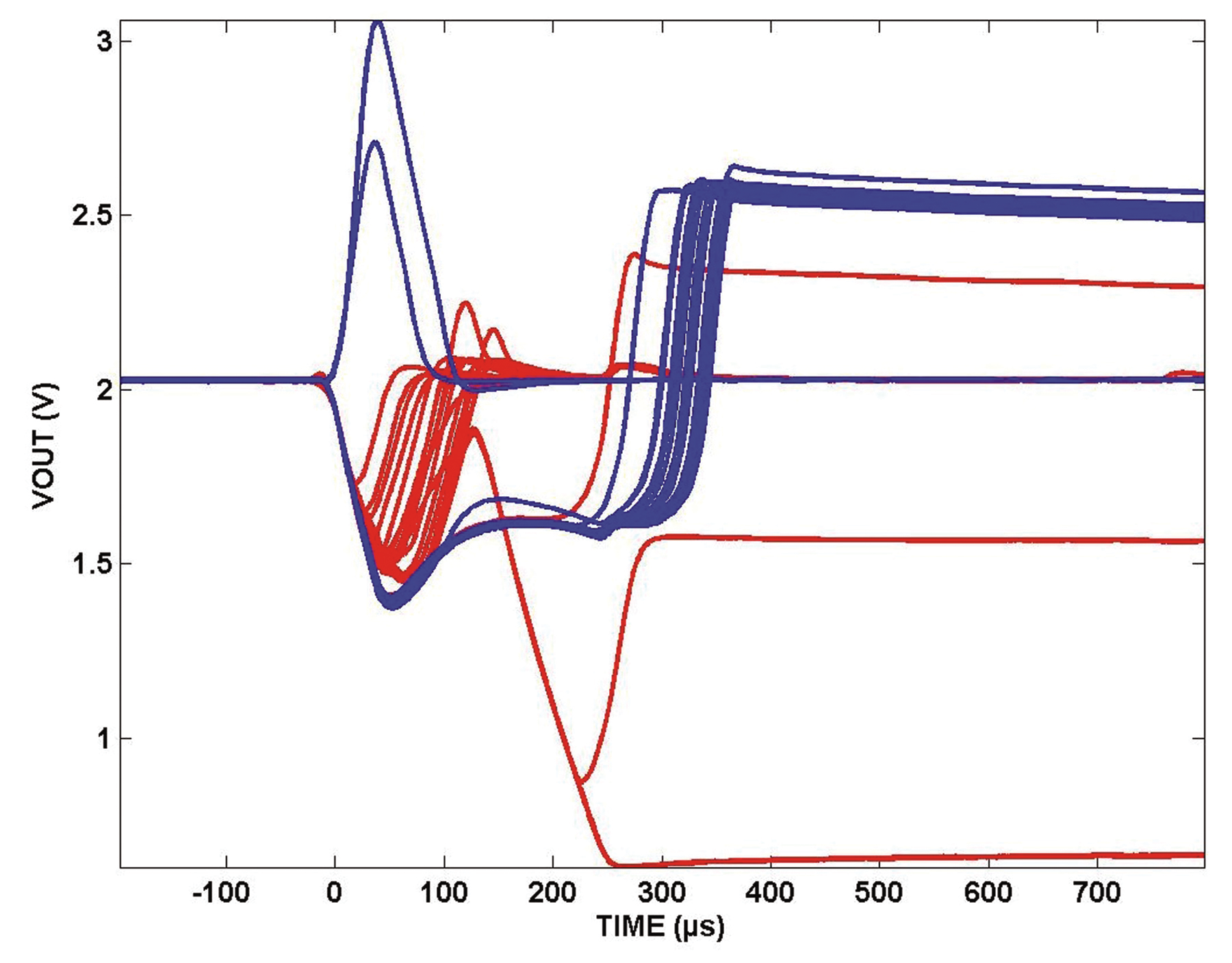
Figure 3. COTS switching regulator exposed to heavy ions.
Seeing this emerging need and convergence of requirements for larger satellite constellations in higher LEO altitudes sparked Renesas Electronics Corporation to engage and understand the company’s customer base, resulting in Renesas creating cost-effective radiation tolerant product development and manufacturing flow to address these emerging smallsat needs.
The result is a new family of products that are being released in small form factor surface mount plastic packages, typically with Nickel/Palladium/Gold-Silver (Ni/Pd/Au-Ag) lead finishes (see Figure 2 on the previous page).
In addition, the lead frames used are uPPF roughened lead frames that reduce the risk of de-lamination. The Renesas rad-tolerant products use gold wire bonds instead of copper. The assembly locations are selected to run on automotive grade assembly lines throughout Southeast Asia. This is important as the automotive lines tend to have higher quality assurance standards compared to non-automotive assembly lines.
These ICs will have a one-time characterization during development for total ionizing dose (TID) up to 30krad (Si), single event effects (SEE) with a linear energy transfer (LET) up to 43MeV, and military temperature range of -55°C to +125°C.
The parts will also be qualified on an AEC-Q100 like qualification with testing up to 2,000 hours of burn-in, 500 temperature cycles, and package moisture sensitivity testing.
This is a significantly different development and manufacturing flow versus the traditional radiation hardened products, which have large ceramic packages, radiation assurance testing in the product screening flow, and temperature and burn-in testing on each part in production---all which drives up the IC cost.
To further differentiate these products and offer value to customers, Renesas uses single site fab and assembly. This is crucial for radiation testing, as different fab sources can have different radiation performance levels. The use of multiple fab sites would necessitate the need for ongoing radiation assurance testing, thereby driving up costs.
These products also have change control and notification procedures that are the same as Class V parts. Customers will receive notification if any changes are made to the fab location, assembly location, or materials used in product production.
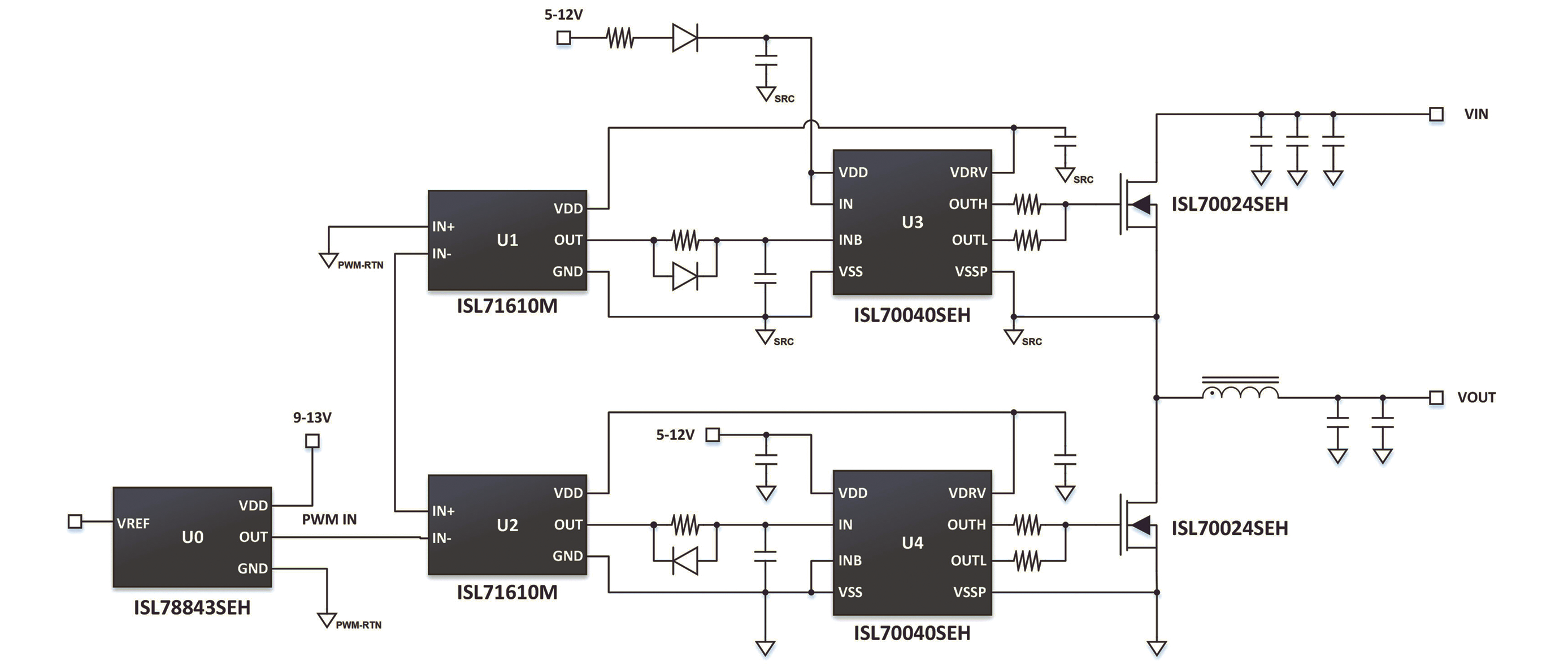
Figure 4. Half-bridge power stage using Renesas radiation tolerant
plastic products.
Avoiding Catastrophic Single Event Effects
The probability of a single event effect occurring and the potential associated energy level of that event or particle would likely be lower in LEO vs. GEO; however, this is still of concern for a large constellation of satellites at an altitude close to, or getting in to, the Van Allen Belt. For heavy digital content ICs, such as a microprocessor, a SEE is typically not a catastrophic event — cycling the power or software-based corrections typically takes care of the issue.
However, when it comes to the device that is powering the microprocessor or processing sensor data signals to the microprocessor, that could be a different story. Depending on the fabrication process a device is built on, a part can have a certain level of robustness against a destructive event at a given rated voltage.
Where it gets more interesting is with a single event transient (SET), or a single event functional interrupt (SEFI).
If a power device or an operational amplifier are impacted from a heavy ion or particle in such a way that their output is disturbed to unacceptable levels in a transient event, they can potentially damage or destroy the device connected to their output, like a microprocessor. In some cases, this can mean a mission failure for the whole satellite.
In a best-case scenario, an interrupt of the output can occur, which could require a power recycle, causing a disturbance to the functionality of that portion of the satellite. Within the specific IC, these types of events can only be mitigated from within the IC design.
In typical commercial devices, this is usually the farthest element from an IC designer’s mind as it is not necessary, burdens their job and potentially affects the performance and size of the device. These events all go against their objective of designing and releasing a highly competitive commercial component.
The bottom line: It is easier to get away with a COTS digital type IC for LEO space applications, but don’t assume this is the case for analog or analog mixed-signal IC components.
However, there are system-level techniques to help overcome this challenge, but they will potentially add system complexity around the design, production implementation, analysis, and manufacturing or procurement, which all can add to the cost of the satellite or program.
Furthermore, they can add to the Size, Weight, and Power (SWaP) of the system solution, which goes directly against the goals of a high-performance lower cost small satellite. Figure 3 above shows what happens to a commercial voltage regulator when exposed to single event testing. As shown in the plot, the nominal output voltage is set to 2V.
However, once the device is exposed to heavy ions, there is a significant transient. This transient produces SEFIs; however, more troublesome are the cases where the output voltage increases to greater than 2.5V for an extended period. While testing has shown that this device survives the heavy ion bombardment, the downstream device that is being powered would not.
The Rise of Plastic Packaged, Rad-Tolerant ICs
Renesas has developed and launched three initial radiation-tolerant plastic packaged ICs.
These products consist of the ISL71026M 3.3V controller area network (CAN) transceiver, the ISL71444M 40V quad precision rail-to-rail input and output (RRIO) operational amplifier, and the ISL71001M 6A point-of-load (POL) voltage regulator (see Figure 2).
The ISL71026M and the ISL71444M are available in a TSSOP surface mount package and the ISL71001M is available in a surface mount QFP.
Recently, Renesas introduced more products on the rad-tolerant production flow and targeting power supply designs. These include the ISL71043M low power single-ended PWM controller, the ISL71040M low side GaN FET driver, the ISL71610M/ISL71710M digital GMR based isolators with passive or active inputs.
The ISL71610M/ISL71710M can also be used for isolated serial communications buses, such as CAN, RS-422, and RS-485. Figure 4 above shows the ISL71043M, ISL71040M, ISL71610M an ISL70024SEH in a half-bridge power stage.
These parts combine commercial-like performance, reliable packages, and the radiation performance needed for satellite constellation programs that are cost effective and dramatically minimize program risks.
These products greatly simplify the job of the electronics designer who has been tasked to design new and innovative circuitry for New Space applications and large constellations of satellites.
In addition, as Renesas has been engaged in the satellite industry for more than 50 years, the company understands that long-term continuity of supply is critical.
Everything possible is done to avoid obsoleting a product. Instead, in very rare cases, a healthy end-of-life procurement program is provided.
This is a well-balanced approach to help customers meet their program metrics. In addition to large satellite constellation programs, these products are very suitable for other applications such as launch vehicles, medical equipment, high altitude avionics, and nuclear power plants.
These are exciting times for the space industry as we witness the emergence of satellite constellations that are poised to change the economics for a significant portion of the industry. It remains to be seen how the current activity will affect the space industry over the long run.
Meanwhile, the emerging trends show great potential. New space programs come with a unique set of requirements and opportunities, which the supplier base is working to address.
Renesas has launched a set of rad-tolerant plastic components, in addition to continuing to produce its traditional radiation hardened ICs, to provide a balanced cost-effective solution that meets the needs of customers targeting LEO, GEO and deep space flights.
To learn more about the rad-tolerant plastic ICs , access this direct link:
www.renesas.com/us/en/products/space-harsh-environment/rad-tolerant-plastic-package.html
To watch a video demonstration, select this link:
https://www.renesas.com/us/en/support/videos/isl71xxx-radiation-tolerant-plastic-package-video.html
Josh Broline is the Director of Marketing and Applications for the Space and High Reliability Product Line with Renesas Electronics Corporation. He is responsible for developing and running the Space and High Reliability business. Mr. Broline has published numerous articles in various industry magazines. He holds a BSEE from the University of Central Florida and an MBA from Florida Institute of Technology.
Steve Singer is a Marketing Manager for the Space and High Reliability Product Line with Renesas Electronics Corporation. He is responsible for developing the strategic and product roadmaps for the radiation-tolerant plastic products for space applications. Mr. Singer holds a BSEE from North Carolina State University and an MSEE from the University of Florida.


